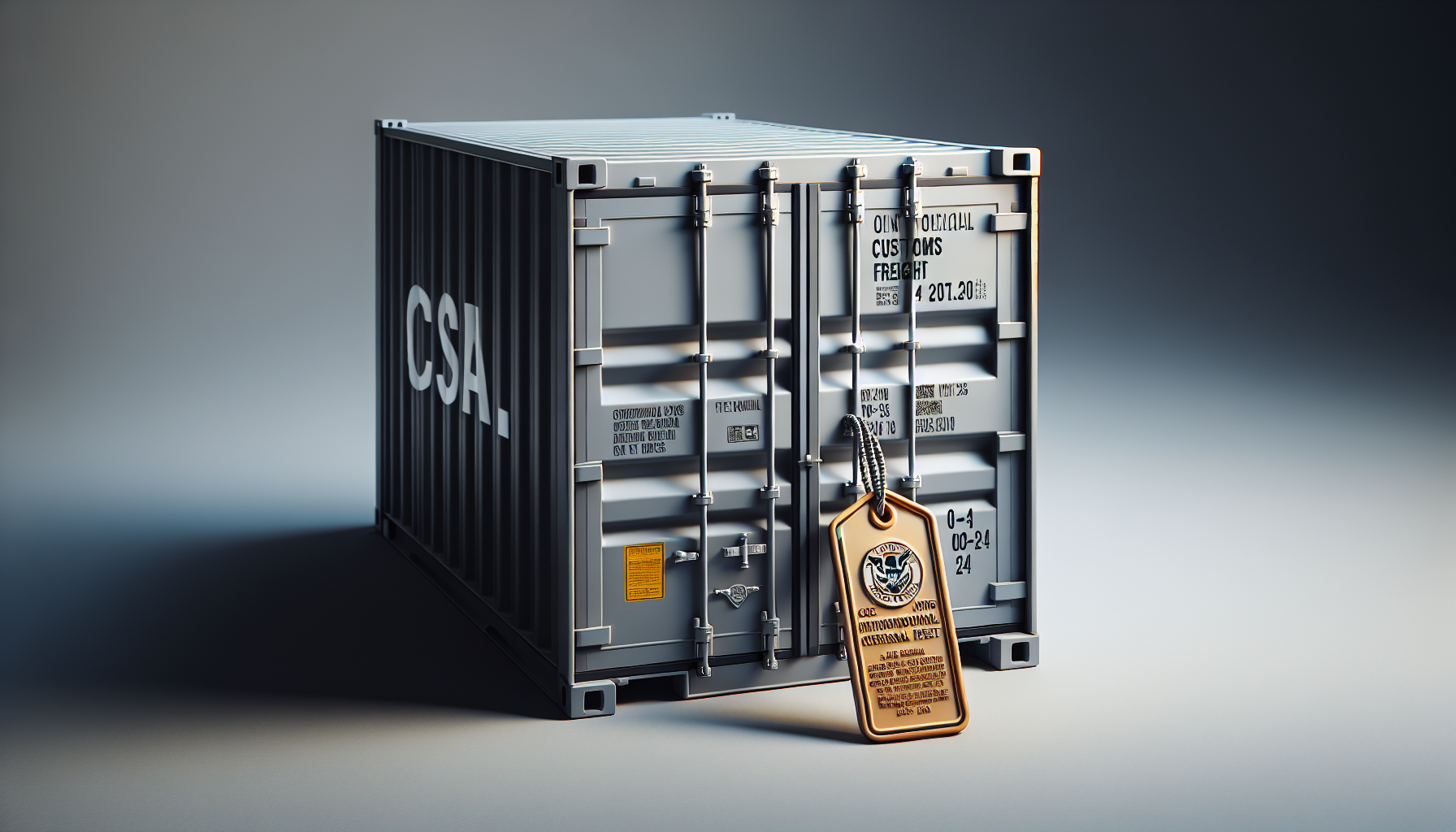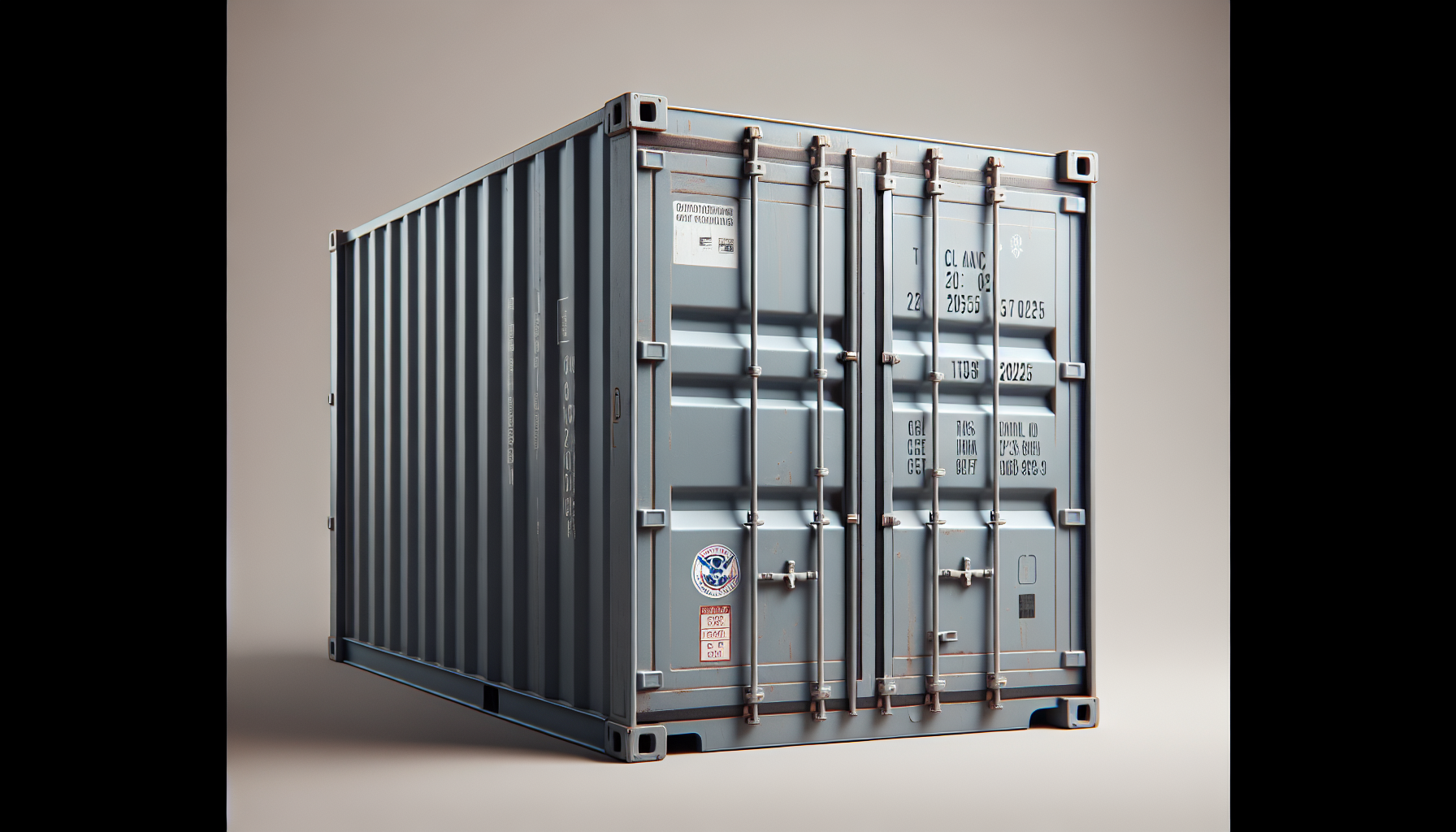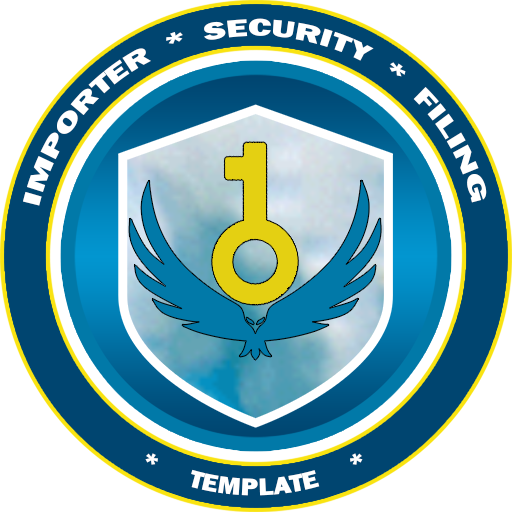ISF Filing For FCL Shipments: Compliance Template For Customs Brokers (2025 Edition)
? Do you know exactly what you need to submit, when to submit it, and how to protect your importer and carrier from penalties for full container load (FCL) shipments to the U.S. in 2025?

What this guide covers and why it matters to you
This article walks you through ISF compliance for FCL shipments from start to finish. You’ll get a clear explanation of requirements, step-by-step filing guidance, compliance checklists, edge-case handling, and practical tips you can use as a customs broker to keep your clients moving and avoid fines. The goal is for you to finish reading with a usable compliance template that reduces risk and improves operational efficiency.
Quick reminder: what ISF is, in plain terms
The Importer Security Filing (ISF), often called the “10+2,” is a U.S. Customs and Border Protection (CBP) requirement that strengthens security by collecting advance cargo information. For FCL shipments, you must file accurate data within strict timeframes. If you’re responsible for the filing, you need to know the data elements, deadlines, exemptions, and how to handle amendments.
Who is responsible for filing ISF for FCL shipments?
You, as a customs broker, typically prepare and submit the ISF on behalf of the importer. The importer remains legally accountable, but CBP treats the party submitting ISF as a primary contact for compliance questions and potential enforcement. You must coordinate closely with the importer, carrier, and freight forwarder to collect accurate data.
Key deadlines and timing
Time is critical with ISF. For ocean imports:
- ISF must be submitted at least 24 hours before the cargo is loaded onto the vessel at the foreign port.
- For shipments transiting via another foreign port, you still need to file based on the actual laden-on-board (onboard) event. Missing the deadline leads to “no ISF” penalties and potential cargo holds.
Required ISF data elements for FCL shipments
You must collect and submit these core elements for each ISF:
- Seller (Owner) name and address
- Buyer (Owner) name and address
- Importer of Record (IR) number or EIN
- Consignee number(s) / party party information
- Manufacturer (supplier) name and address
- Country of origin of the goods
- Harmonized Tariff Schedule (HTS) number(s)
- Container stuffing location (where the container was packed)
- Consolidator (stuffer) name and address
- Destination country (fixed as the U.S.)
- Port of destination (U.S. port where the vessel will discharge)
- Vessel name and voyage number
- Bill of lading number You should verify whether your client’s shipments require any additional information and confirm that all parties provide consistent information.
Who provides each piece of data — practical assignment of responsibilities
Make a simple matrix in your operations manual so everyone knows who supplies what. For example:
- Importer: Importer of Record number, consignee info, buyer/seller identities, HTS
- Supplier/manufacturer: Manufacturer name, address, country of origin, packing location
- Consolidator: Container stuffing location, consolidator name and address
- Carrier: Vessel name, voyage number, bill of lading Clarify deadlines for each party so you can file on time.
Step-by-step ISF filing process for FCL shipments
This walk-through is designed for brokers who manage ISF end-to-end.
1. Pre-booking checklist
Before the shipment is booked, confirm the importer’s EIN and legal consignee names, the supplier details, and the HTS codes. Early accuracy saves amendments later.
2. Booking and documentation gathering
When the booking is confirmed, request the export/invoice, packing list, supplier statements, and container stuffing plan. If the container stuffing occurs at the supplier site, confirm the exact location address that must appear in the ISF.
3. Preliminary pre-carriage checks (if applicable)
For shipments moved to the port on a different mode (rail/truck) before stuffing, confirm intermodal movements and whether separate ISF rules or filing aids apply.
4. File the ISF at least 24 hours before loading
Submit the ISF through your ACE-certified system or through your service provider. Make sure vessel and voyage data match the carrier’s documentation.
5. Monitor confirmation and flags
CBP returns a message accepting or rejecting the ISF or requesting an amendment. Treat rejections as urgent and correct them immediately.
6. Amendments and corrections
Amendments are allowed but kept to a minimum. File amendments only when you have a verified correction from a reliable source (carrier or supplier). Keep a log of amendments and reasons for audit trails.
Sample broker-oriented ISF checklist (practical)
Use this checklist for each FCL booking:
- Confirm Importer of Record number and legal name.
- Obtain supplier name, address, and country of origin.
- Get HTS numbers and commercial invoice details.
- Verify container stuffing location and consolidator info.
- Confirm vessel, voyage, and bill of lading with carrier.
- File ISF 24+ hours before loading.
- Confirm acceptance from CBP and resolve any rejections.
- Keep amendment log (who requested, reason, timestamp). This checklist reduces errors and demonstrates your governance to clients and CBP.
Common FCL edge cases and how you handle them
You’ll encounter tricky scenarios — here’s how to manage them.
Multiple suppliers in one container
When multiple manufacturers’ goods are stuffed into a single FCL container, you must list each manufacturer and country of origin. Ensure your system can accept multiple manufacturer entries and that documentation corroborates origins for each line.
Transshipment and carrier swaps
If a vessel changes or cargo is transshipped, you must confirm whether the bill of lading or vessel details changed before filing. File based on the confirmed vessel that will carry the goods to the U.S. port of unlading.
Consolidated shipments labelled as FCL
Sometimes clients request FCL for consolidations. Confirm stuffing details: if stuffed in the origin country into a single container by a consolidator, it’s FCL and requires full ISF detail. If cargo is less-than-container-load (LCL) at stuffing, different rules/stuffers apply.
Fill-in or unknown HTS on preliminary documents
Never file an ISF with placeholder HTS values unless you have a robust amendment control process. If HTS is pending, obtain client confirmation with a timestamped exception approval and file as soon as HTS is verified.
Penalties and CBP enforcement: what to expect
CBP penalties include liquidated damages and civil fines for failures to file or late submissions. Repeated violations increase scrutiny and can lead to holds on multiple shipments. You need documented SOPs to show reasonable care—this helps in mitigation.
How to demonstrate reasonable care as a customs broker
To reduce liability risk, maintain:
- A written ISF SOP and evidence of staff training
- The checklist for every ISF filed
- A documented communication trail with the importer, supplier, and carrier
- A record of accepted or rejected ISF transmissions and amendments These documents help show you took reasonable steps to collect accurate data and file on time.

Technology and integration best practices
Automate where possible. Integrate your booking system, TMS, and ACE transmission tools so known fields auto-populate the ISF and reduce manual transcription errors. Implement validation rules for addresses, HTS format, EIN checks, and flagged mismatches.
Audit-ready recordkeeping: what to keep and why
Keep all ISF filings, amendments, supporting invoices, supplier declarations, stuffing logs, and carrier confirmations for at least five years. CBP may audit any ISF; retaining documentation supports compliance defense.
Client onboarding checklist for ISF responsibilities
When you take on a new importer, use a standard onboarding form that captures:
- Legal importer name and EIN
- In-house contact for ISF data
- Preferred HTS references and commodity contacts
- Known suppliers and factory addresses
- Any prior ISF compliance issues This saves time on the first shipment and prevents misfiled ISFs.
Practical amendment policy you can adopt
Create a policy that:
- Requires written verification before amendments
- Tracks who requested each amendment and why
- Limits the number of non-critical amendments to avoid CBP attention
- Applies a small client fee for frequent corrections to encourage accuracy Your amendment policy keeps workload manageable and promotes accurate upstream data.
Coordination with carriers and port agents
Carrier data quality is critical. Confirm that the bill of lading number and vessel/voyage data match the carrier system. If there’s a mismatch, escalate to the carrier immediately and pause the ISF submission until clarified to avoid rejections.
Sample risk scenarios and actions
- Scenario: Supplier provides wrong stuffing address. Action: Obtain supplier’s signed correction, amend ISF immediately, and document signature/timestamp.
- Scenario: HTS code disputed by client after filing. Action: Record client’s position, secure broker’s tariff research, file amendment if necessary, and document the decision rationale.
- Scenario: Container transshipping mid-voyage. Action: Confirm final vessel and fence date; amend ISF only if required by the change.
Client communication templates (what to say)
Use short, direct templates:
- Request for missing data: “To file ISF by 24 hours before loading, we need the manufacturer name, exact stuffing address, and HTS code for this booking by [time].”
- Rejection notice to client: “CBP rejected ISF for [BL number] due to mismatched vessel name. Please confirm carrier-provided vessel/voyage immediately so we can correct.” Clear, timestamped requests are powerful evidence of your reasonable-care efforts.
Quality control metrics to track
Monitor:
- Percentage of ISFs filed on time
- Rate of ISF rejections per month
- Average number of amendments per shipment
- Time from booking to ISF submission Use these KPIs to identify persistent gaps, recurring supplier issues, or carrier data problems.
Training and staffing tips for brokers
Cross-train multiple staff on ISF systems and CBP messaging. Create a playbook for common rejections and a quick-reference guide for amendments. Regular refresher training reduces mistakes and exposure.
Integrating the ISF compliance template into daily operations
Adopt a consistent workflow:
- Day 0: Booking confirmed and preliminary data captured.
- Day X: Supplier confirms stuffing; data validated.
- Day X+Y: File ISF and verify CBP acceptance.
- Ongoing: Monitor and amend if necessary. Make sure each step is assigned to a role and logged.
Final compliance checklist before filing
Before you file:
- Is importer EIN verified and valid?
- Do supplier/manufacturer names and addresses match invoices?
- Is container stuffing location precise and correct?
- Does vessel/voyage and BL number match carrier docs?
- Are HTS numbers verified? If everything checks out, submit the ISF.
When to involve legal counsel or compliance specialists
If you identify systemic misdeclarations, repeated penalties, or disputes about who is the legal importer, consult a customs attorney. Early expert involvement can prevent fines and protect your client relationships.
Where to find regulatory updates and resources
Subscribe to CBP bulletins and trade alerts, and join trade associations that offer compliance updates. Build relationships with your carrier compliance teams for early updates on procedural changes.
Your next steps after reading this guide
Create or update your ISF SOP using the checklists and templates above. Train your team, update your client onboarding forms, and implement the amendment policy. These steps will reduce mistakes, lower amendment rates, and demonstrate reasonable care to CBP.
Helpful note about service partners
If your brokerage offers ancillary services to importers, consider bundling ISF submission with supports that clients value — proper bonding, clearance coordination, and last-mile logistics. For example, your account management pitch might include coordination for ISF Filing, Bond, Clearance, and Trucking Support that streamlines import flows and concentrates accountability.
If you follow this compliance template and convert the checklists to operational workflows, you’ll make ISF compliance predictable, defensible, and efficient for FCL shipments in 2025.
